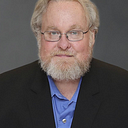The Kennedy Park Concession Stand in the 1970s and 1980s
I grew up in Taymouth Township, which is located in southern Saginaw County in the middle of Michigan. Not quite the middle of the mitten as we Michiganders say, but pretty close. Had I lived nine tenths of a mile further north, I would have lived in Bridgeport Township, which borders the city of Saginaw. That would have meant attending schools that were much more diverse than the nearly all white schools of the Birch Run system which I did attend.
At the corner of Townline Road and Bell Road, also about nine tenths of a mile north of the house I grew up in, was Assumption of the Blessed Virgin Mary Roman Catholic Church. On the church grounds, which were sprawling, stood Kennedy Park, which consisted of multiple baseball fields and the old parish hall. The north side of the parish hall building had a concession stand built into it to sell candy and pop to the hundreds of people who played baseball and softball regularly on the diamonds of Kennedy Park. Kennedy Park played in a league with such teams as Albee Township and Spaulding Township, but for some reason not Birch Run. I think they had their own leagues going.
I didn’t much like playing baseball, so instead of standing out in right field, where the worst players have to play, I got to work the concession stand quite often. Kennedy Park was managed by my great-uncle John Lazowski, a cantankerous Polish American if there ever was one. During mass, he wore a Polish flag tie clip. He also had a “Proud to be Polish” front license plate, which he had installed upside down on purpose.
Actually, it might have been a Polish flag lapel pin. In any event, I learned that the red stripe belongs on the bottom of the Polish flag from that clip or pin by turning “red on bottom” to “RB,” which sounded like Arby’s. I guess we all have our techniques for remembering things.
I loved working the concession stand. First, we had the best popcorn ever. Uncle Johnny would buy the fixings from Hayes Specialties in Saginaw, and the machine generated the crunchiest, tastiest kernels of yellow-orange goodness. We also sold frozen Charleston Chews, which were fun to crack against the counter. To this day, good popcorn, which is very difficult to come by, is still one of my favorite foods. And now I want a frozen Charleston Chew. Strawberry.
Michigan charges a ten cent deposit on pop bottles and cans. Red licorice sticks cost ten cents at the concession stand. Uncle Johnny encouraged us to convince the patrons to take a licorice instead of their dime when they brought back their cans. This made a tidy profit for Kennedy Park, because the licorice probably cost only a nickel, or less. Most kids happily took the deal.
Speaking of money, the US took silver out of the majority of coins in 1965. However, in the late seventies and early eighties an old silver coin would sometimes make its way into the till at the Kennedy Park concession stand. So when I worked there I always brought a pocketful of change to swap out for the silver. One thing that a lot of people didn’t seem to know is that JFK half dollars were forty percent silver from 1965 to 1970, so I usually picked up a few of those each week. I probably should have donated the profits from my silver scavenging to the church, but I didn’t.
Kids hanging out at the park often traded baseball cards, but neither playing the sport nor collecting cards interested me. I collected coins. Once a kid who wasn’t too bright asked me if I wanted to buy some big, old Canadian pennies he owned. From 1858 to 1920, Canadian pennies were bigger than quarters are today. I said sure, and bought a bunch of them from him for a very low price. I probably should sell those and donate the money to the church.
The original Assumption of the Blessed Virgin Mary Roman Catholic Church was built in 1899. The family of my Grandma Lazowski (née Smokoska) had a lot to do with getting the parish created to serve the religious needs of the Polish immigrants who were flooding into the area. By the middle 1970s parish leaders determined that the old building wasn’t meeting the community’s needs, so they raised money and built a new, modern church.
It wasn’t clear what would be the best thing to do with the old church, so it stood empty for quite a while. I think for a time it was even used as a basketball court. But soon enough, parish leaders made the decision to tear down the old building. It broke my Grandma’s heart the first time we drove past the empty space where the old church had stood for so long.
The building was not demolished in a dignified way. I think one of the parishioners used his truck and some ropes and just pulled it down. The old metal cross at the top of the steeple disintegrated in the process. It took him a long time to remove all the rubble. When I wasn’t working at the concession stand, I would root through the rubble for whatever treasures I could find. I don’t remember finding much other than an old glass bottle and a petrified rat. I probably should have sold that rat and donated the money to the church.
Kennedy Park is gone now. For a time, the old parish hall that contained the concession stand was converted into a pavilion, but eventually the church leaders had it torn down too. Assumption of the Blessed Virgin Mary Roman Catholic Church is gone now too. The diocese sold it to the Pentecostals, and put aside some money to maintain the parish cemetery, which is full of people to whom I’m related.
